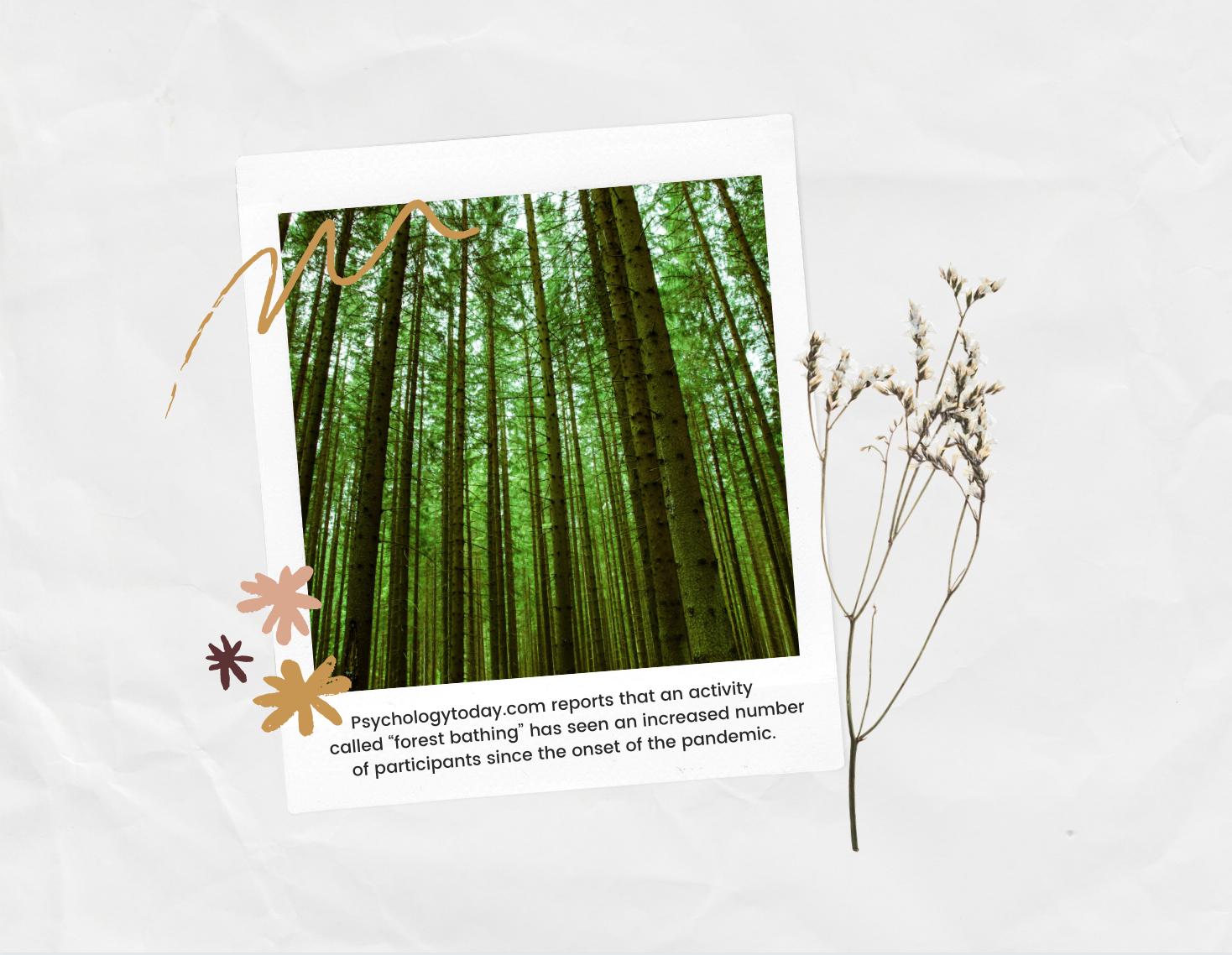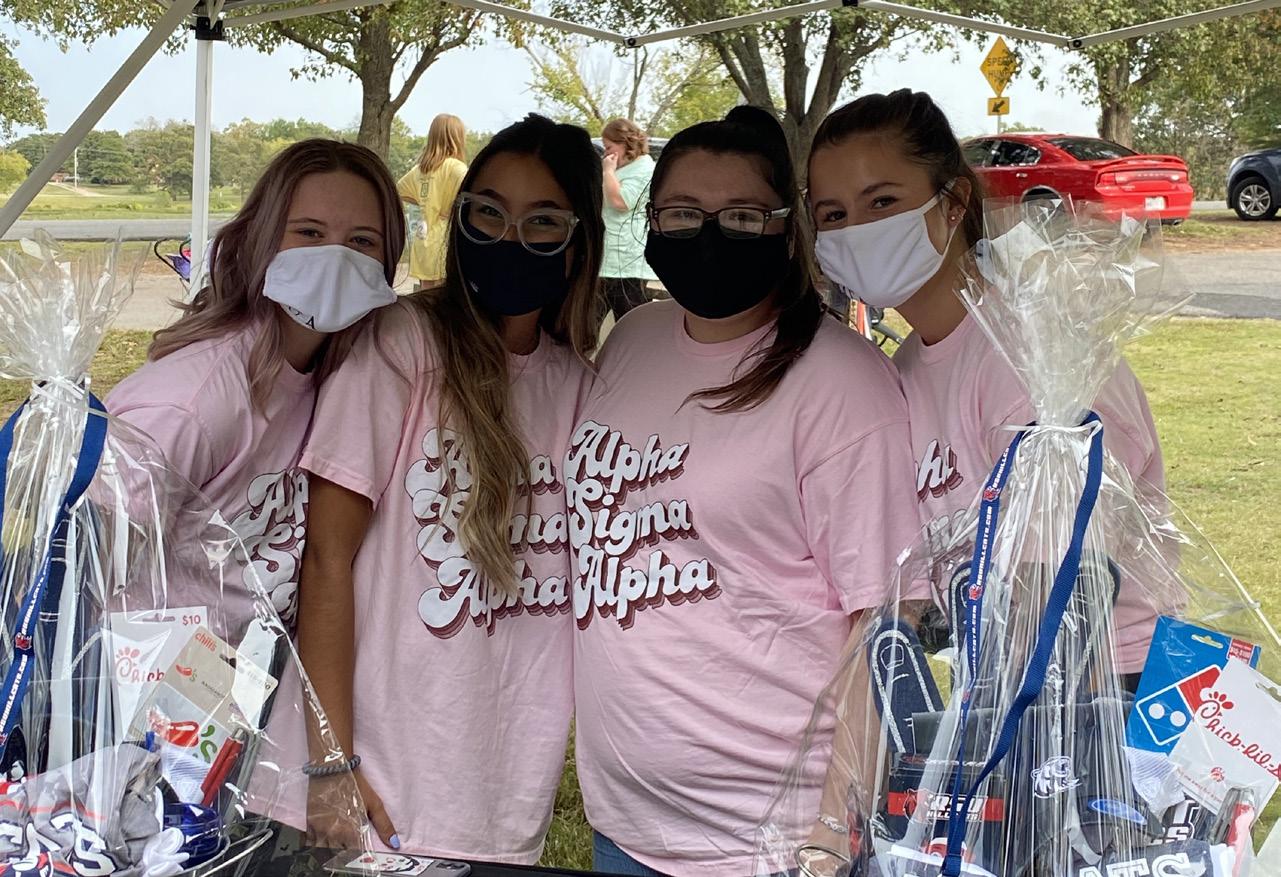
4 minute read
FROM THE PRESIDENT
BY KELLY MCGINNIS BECK, EK, NATIONAL PRESIDENT
Our national headquarters is built upon land that belongs to the Miami, Potawatomi, Shawnee people and others. On our website, when you navigate to the page that shares the history of our national headquarters, you will find our land acknowledgement statement:
Advertisement
We acknowledge that Alpha Sigma Alpha National Headquarters is located on the traditional and ancestral territory of the Miami, Potawatomi, Shawnee people and others. We begin by acknowledging that the land is the contested territory of Native peoples. The genocide and removal included the Beaver Wars, the 1795 treaty of Grenville, the War of 1812, the 1830 Indian Removal Act and the 1838 Potawatomi Trail of Death (started in Indiana and ended in Kansas). It is situated on treaty land that is steeped in rich Indigenous history and home to many First Nations people today, including Native American and Indigenous Studies scholars, leaders, artists, writers, athletes, environmentalists and activists. As an organization, we have a responsibility for the stewardship of the land on which we live and work.
Many native tribes fled the territory that became Indiana (Land of the Indians) during a conflict known as the Beaver Wars (1640-1701). These groups only returned after the wars ended in 1701. The war was fought over territory and the ability to hunt beaver for their pelts. Beaver hats served as a status symbol for position and wealth from the 1600s to the 1700s. Most notably, Napoleon Bonaparte’s hats were made from beaver pelts.
The 1795 Treaty of Grenville began the forced removal of land from Native Americans in Indiana. The continual conflicts between the United States and Europe eventually came to a head, especially after the War of 1812, and the United States began removing the indigenous peoples of Indiana to territories further west. The Potawatomi were the final indigenous peoples to be removed from Indiana, forced to march from their homeland in northern Indiana to a small reserve in present-day Kansas. This trek is referred to as the Trail of Death because a day rarely passed that a member of the party did not die, usually a child. More than 40 people died over this 660-mile trek.
Our land acknowledgement statement recognizes and respects Indigenous Peoples as traditional stewards of the land we reside on. You may wonder why this is important. To quote Northwestern University’s Native American and Indigenous Initiatives, “It is important to understand the longstanding history that has brought you to reside on the land, and to seek to understand your place within that history. Land acknowledgements do not exist in a past tense, or historical context: colonialism is a current ongoing process, and we need to build our mindfulness of our present participation.” As stewards of the land today, Alpha Sigma Alpha’s property is a Certified Wildlife Habitat® with the National Wildlife Federation. This land provides a wildlife garden that attracts birds, butterflies and other neighborhood wildlife. It is our way of taking care of the land for the future.
I encourage you to learn more about the history of the land upon which you live and work. You can visit https://nativeland.ca/ and enter in your address to find out which tribe(s) were the original settlers of the land. Where I live in eastern Pennsylvania, the Lenni-Lenape people first settled here. Many were eventually removed from the area and some even moved to Indiana before mostly settling in Oklahoma. The Lenape were the first tribe to sign a treaty with the United States and the first tribe to have land set aside for them in New Jersey. It was interesting to learn that many place names in Pennsylvania are derived from the Lenape language, such as Manyunk, Conshohocken and Neshaminy. And where I live, we have several streets with names derived from the Lenape tribe, including Lenape Road. What will you learn about the land upon which you live? And once you have built your knowledge, are there ways you can support local Indigenous tribes? Alpha Sigma Alpha will continue to do our part in serving as allies and stewards of this land and any land where we meet. At future in-person events we will open with a land acknowledgement statement. I look forward to the day when we can be together again to celebrate our sisterhood and the beauty around us.
In Alpha Sigma Alpha,
KELLY MCGINNIS BECK, EK NATIONAL PRESIDENT @ASAKELLYM
References:
https://www.potawatomi.org
https://www.connerprairie.org/educate/indiana-history/native-americans-inindiana/
https://www.warpaths2peacepipes.com/the-indian-wars/beaver-wars.htm
https://www.in.gov/dnr/parklake/8616.htm
https://www.lenape-nation.org/
16

in every issue
03 FROM THE PRESIDENT 05 FROM THE EDITOR 06 NEWS & UPDATES 26 CHAPTER NEWS 30 FROM THE ARCHIVES 31 FROM THE FOUNDATION

just this issue
08 NATIONAL EVENTS UPDATE 10 PROGRESS NOT PERFECTION 12 NOT ALL WOUNDS ARE VISIBLE 16 THE BEAUTY OF NATURE 24 MEMBER SPOTLIGHT










